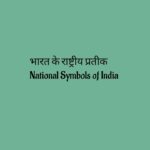10 Powerful National Symbols That Define a Nation’s Identity
Introduction
National symbols play a crucial role in shaping the identity, unity, and pride of a country. These symbols—ranging from the flag to the national anthem, emblem, and animal—carry historical, cultural, and emotional significance. They remind citizens of their shared heritage and instill patriotism.
In this article, we will explore the various national symbols, their impact on daily life, historical significance, interesting facts, and why they are important to society.
What Are National Symbols?
National symbols are representations that embody a country’s values, culture, and history. These may include:
- Flag (Represents sovereignty and unity)
- Anthem (Musical expression of patriotism)
- Emblem (A distinctive coat of arms)
- Animal, Bird, Flower, Tree, River (Signifying cultural or environmental heritage)
- Currency (Economic identity)
Every country has unique symbols that reflect its essence, struggles, and aspirations.
List of Major National Symbols of India
| National Symbol | Representation |
|---|---|
| National Flag | Tricolor (Tiranga) with Ashoka Chakra |
| National Anthem | “Jana Gana Mana” |
| National Song | “Vande Mataram” |
| National Emblem | Lion Capital of Ashoka |
| National Animal | Bengal Tiger |
| National Bird | Indian Peacock |
| National Flower | Lotus |
| National Tree | Banyan Tree |
| National Fruit | Mango |
| National River | Ganga |
| National Aquatic Animal | Ganges River Dolphin |
History and Evolution of National Symbols
National symbols often have deep historical roots. For instance, the Indian flag evolved from the Swadeshi Movement, and the Lion Capital of Ashoka dates back to the Mauryan Empire.
- The Tricolor Flag: Designed by Pingali Venkayya, it became the national flag on August 15, 1947. The three colors represent courage (saffron), peace (white), and prosperity (green), with the Ashoka Chakra signifying progress.
- National Anthem: “Jana Gana Mana”, composed by Rabindranath Tagore, was officially adopted in 1950.
- National Emblem: Inspired by Ashoka’s Lion Capital at Sarnath, it represents power, courage, and confidence.
These symbols have evolved through history, gaining significance through cultural and political changes.
Daily Life Impacts of National Symbols
National symbols are deeply embedded in our everyday lives:
- Education & Awareness – Schools teach children about them to instill patriotism.
- Sports & Events – The national anthem is played before international matches.
- Currency & Official Documents – The emblem appears on Indian passports, currency, and government IDs.
- Environmental Conservation – The Bengal tiger and peacock are protected under wildlife laws.
- Public Holidays & Celebrations – Independence Day and Republic Day feature national flag hoisting ceremonies.
These symbols reinforce national pride and a sense of belonging.
Interesting Facts About National Symbols
- The national flag must always be hoisted higher than other flags.
- Vande Mataram was the first song to inspire the freedom movement.
- The Indian Peacock was chosen as the national bird in 1963 for its cultural and religious significance.
- The Ganges River Dolphin was declared the national aquatic animal to promote conservation efforts.
- The Lion Capital of Ashoka is one of the oldest national emblems in the world.
These facts highlight the importance of preserving these symbols.
Significance of National Symbols
National symbols hold immense significance for a country:
✔ Preserve History – They remind citizens of their nation’s struggles and victories.
✔ Promote Unity – A shared identity fosters national unity.
✔ Encourage Patriotism – They instill a sense of pride and belonging.
✔ Boost Tourism & Culture – Heritage symbols attract visitors and reflect traditions.
✔ Strengthen Governance – Official symbols enhance credibility and authority.
Without these symbols, a nation’s identity would be incomplete.
How National Symbols Are Observed & Honored
Many national symbols are celebrated through official protocols and ceremonies:
🎆 Independence Day & Republic Day – The national flag is hoisted across the country.
🎤 National Anthem – Played at government events, schools, and sports matches.
🌱 Environmental Protection – Conservation programs protect the national animal, bird, and river.
🏛 Cultural Heritage Sites – Monuments like the Rashtrapati Bhavan display national emblems.
Respecting and following these traditions strengthens national integrity.
Wishing Messages for National Symbol Days
If you want to honor national symbols, here are some wishes you can share:
🟢 “Let’s salute our Tricolor and remember the sacrifices made for our freedom!”
🟡 “May our national symbols continue to inspire us to be proud citizens!”
🔵 “Every time you see our flag wave, remember the history and courage it represents.”
🟠 “Happy Republic Day! Let’s uphold the values our national emblem stands for!”
Sharing such messages helps spread awareness and appreciation for these symbols.
FAQs on National Symbols
🔹 Q: Can I use the national emblem for personal use?
👉 No, using the national emblem without government permission is illegal.
🔹 Q: What is the protocol for the national anthem?
👉 Citizens must stand in attention while it is played.
🔹 Q: Can the Indian flag be hoisted at night?
👉 Yes, but only when properly illuminated.
🔹 Q: Why is the peacock India’s national bird?
👉 It symbolizes grace, beauty, and cultural significance.
🔹 Q: How do national symbols impact youth?
👉 They inspire a sense of duty, responsibility, and national pride.
These FAQs clear common doubts and help people follow correct practices.
Conclusion
National symbols are not just representations; they are the heartbeat of a nation’s identity. From the Tricolor that flies high to the anthem that echoes in our hearts, these elements bind a country together. Their role in preserving history, promoting unity, and inspiring patriotism is undeniable.
By respecting and honoring them, we contribute to the legacy of our nation and ensure that these symbols continue to inspire future generations.
🇮🇳 Let’s take pride in our national symbols and uphold their dignity! 🎉










